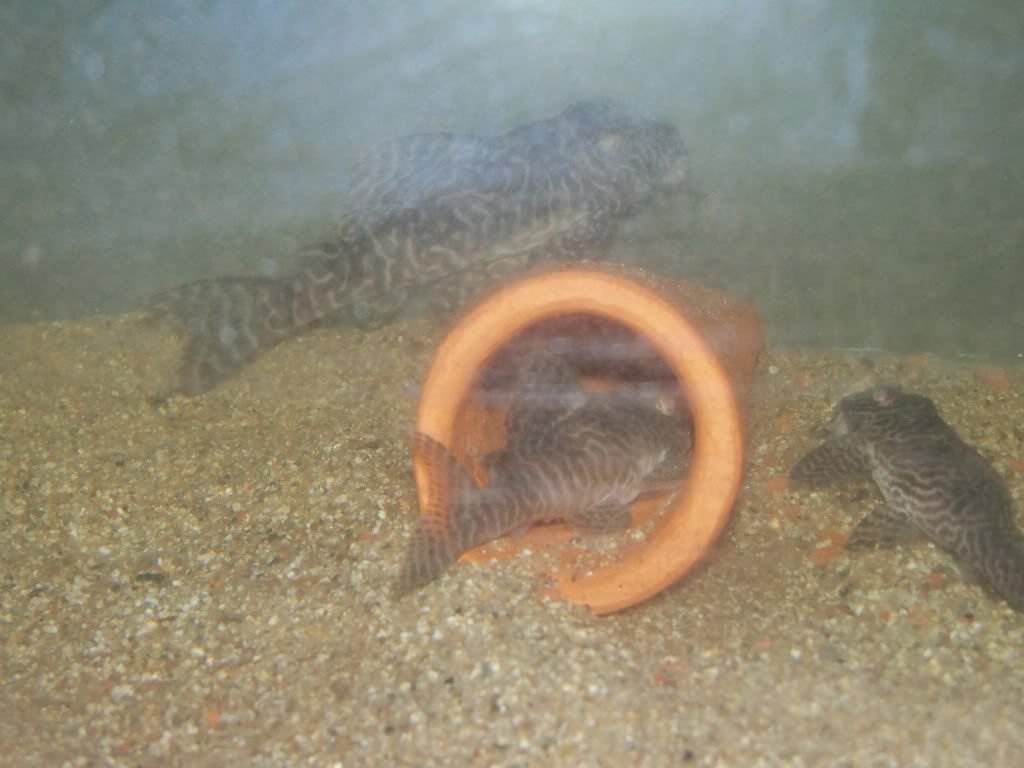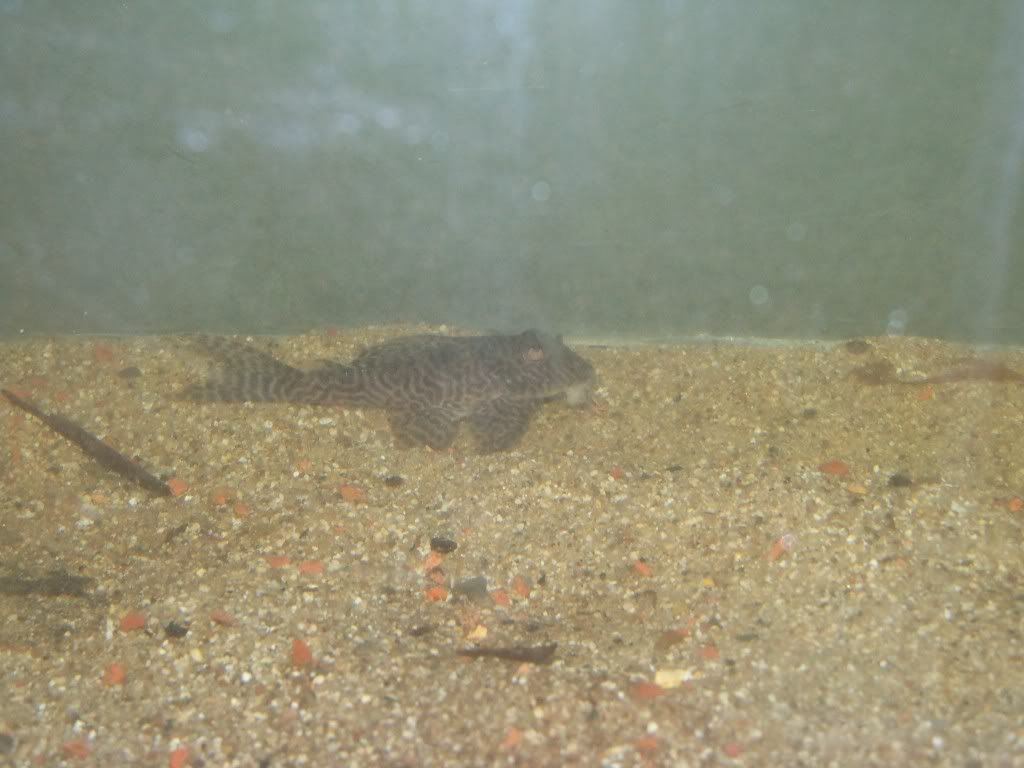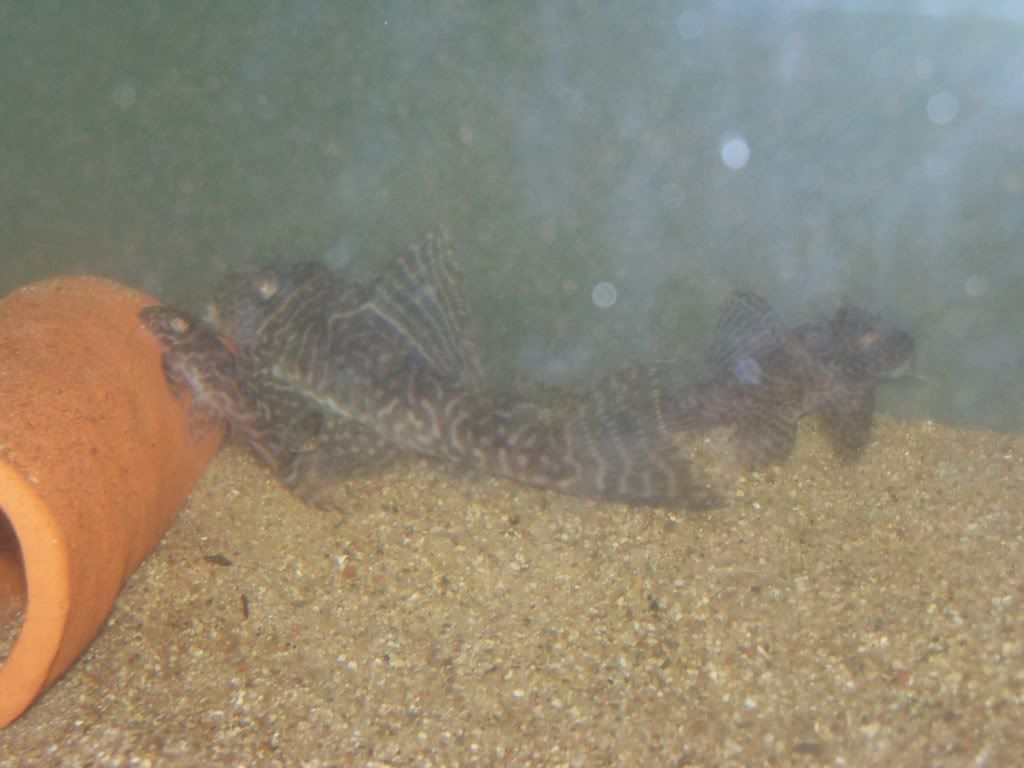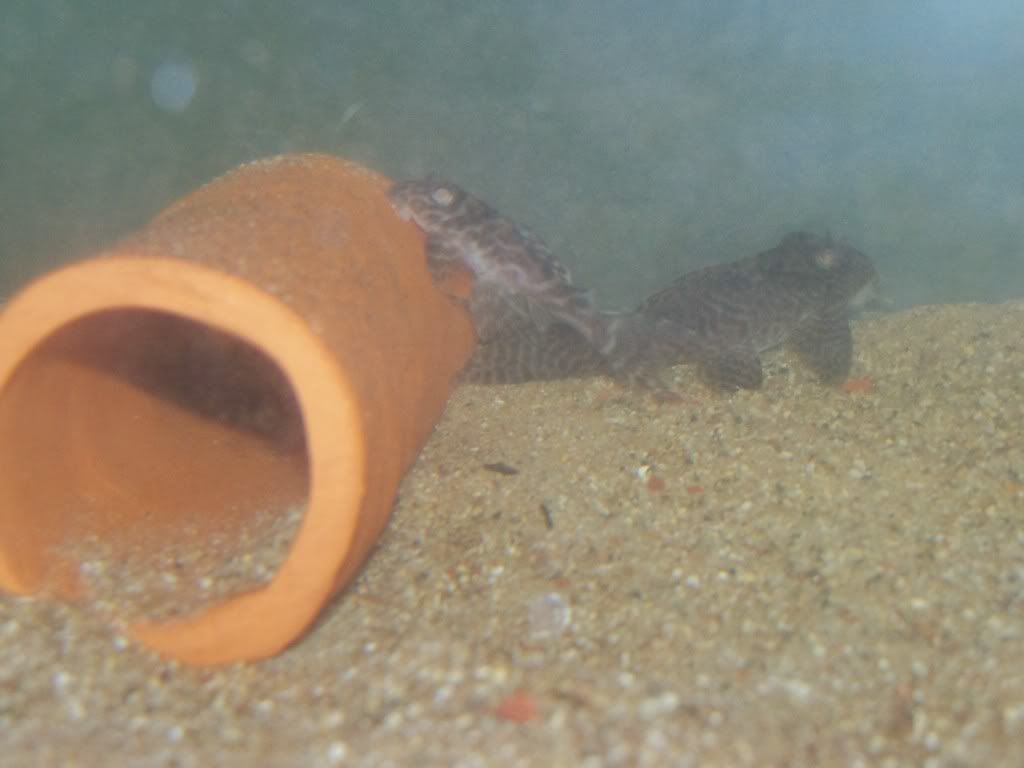






Could you please tell us, what this mistake is about. Do you have any Idea, why they will identify the fish. Usually ist very difficult to separate the wormlined Hypancistrus. And the pattern is - as we all know - not the best idea to do this.You can get new L401 this year, they are allowed for export due a technical mistake
Just short, all fish that are allowed for export but not yet have been scientifically described had to be sent to the Museum in Sao Paulo as reference material under 2010 (maybe some species arrived in beginning 2011 to the museum). Whom that provide these species was the exporters in Brazil, different exporters was responsible for different species, the one that should send the L333 to the museum sent L401 because in their mind these was also L333 "Alenquer" (it was not we). So, in the new permitted list is L333 Royal King Alenquer but not the real L333 from Rio Xingu... let see how it will work out if even possible to export L333 from Xingu, even if they look similar it can be a problem.Could you please tell us, what this mistake is about. Do you have any Idea, why they will identify the fish. Usually ist very difficult to separate the wormlined Hypancistrus. And the pattern is - as we all know - not the best idea to do this.
This is quite irritating that people always think species have been "banned"?thank you. So this means: There will be L 333 before the ban. And L 333 after the ban, wich is L 401 before of the ban. It seems to get really confusing.
Do we will get also L 400, L 287, L 173 (before the ban) as L 66 after the ban?
Not sure what you really mean, the fisherman and exporter knows mostly what species they catch and sell, of all sizes. Than it's a responsibility by importers and hobbyist's to not mix them up. Some exporters try to sell one L-number as another maybe more attractive L-number and at a higher price, the importer still have responsibility to buy from a good and reliable exporter and to not offer the same kind of offer fooling customers.And what is the size of the fish. Its nearly impossible to identify small Hypancistrus. So perhaps the will catch only adult fishes and that could cause some reproduction difficulties in the habitat.
Not really true even if they will make a huge damage, but people with this kind of thoughts make an equal damage or more to the ecosystem we have on earth. If I would be the boss of IBAMA, I would not allow any collecting of fish from Altamira down to the mouth of Xingu as long they are building the damm, after maybe I would allow when the real damaged are known.The will destroy the whole area soon. So lets get the rest, before the damm is build.
The problem is I do not think most people understand the dam building process. The work has to be done under "dry" conditions. To create these "dry" conditions they construct temporary cofferdams to allow the diversion of the river or to create and enclose an area from which they can pump out the water leaving a dry enclosure surrounded by water. This is typically accomplished by dumping the rubble and debris created from building diversion channels etc.into the water to create the cofferdam(s).I would not allow any collecting of fish from Altamira down to the mouth of Xingu as long they are building the damm, after maybe I would allow when the real damaged are known.
I really disagree, you mean that we humans have the right and the possibility to keep and save a species in our aquariums and in the same time we increase the damage of nature emptying the river on species? The more species and fish that are left in this part of Xingu the higher is the chance that some of these species not will get extinct in nature, we don't know which will dissapear or not and if we collect everything we will also extinct species that would survive even the damage of the dam.Given all of the above plus many other things not mentioned, I think it will take an absolute miracle for most of the fish in that region to have even a remote chance of survival. If I was in charge of IBAMA I would want get as many fish out of the river as possible before they are killed off.
Sorry, but the effect was:This is quite irritating that people always think species have been "banned"?
There have never been any ban either before or after, is it so difficult to understand that all these species have been illegally exported??
This is exactly the opposite of what I think. As a breeder of nearly 15 variants of Hypancistrus, I think, that we do not need any wildcaught fish for a long time. Let this little creatures stay were the are.The will destroy the whole area soon. So lets get the rest, before the damm is build.
I have to agree with Janne. I'm not sure what text books you've been reading, but this is not conservation as should be conducted in the 21st century.TwoTankAmin wrote:If I was in charge of IBAMA I would want get as many fish out of the river as possible before they are killed off.
Ok, I take it one time more, there have never been a ban and have never existed a ban. These was species illegally exported all the time, they have never been allowed either before or after. If you have a list of species permitted for export and you export other species illegally that is a crime, just what it was and nothing else. Now a few of these before illegally exported species are allowed for export has nothing to do with a "ban", sounds strange to even discuss it... don't people know the difference between illegal and legal?Sorry, but the effect was:
- before the ban - every fish was on sale - even Hypancistrus zebra. So I know all the lists, but the effect was …
- after the ban - controll of exporters. The white list was enforced. You could name it like you want. I call it a ban, because that was the effect.
Easy for you to say, just think on all other people that "want" these species you already have... we are a few billions of people on this earth, you and all other breeders cannot fill the demand and that is the problem for some species.This is exactly the opposite of what I think. As a breeder of nearly 15 variants of Hypancistrus, I think, that we do not need any wildcaught fish for a long time. Let this little creatures stay were the are.
Yes in one way it's, we still know there are fish living in Tocantins after they built the dam, what we don't know is what was living there before the dam. If we look above water and the terrestrial life, it's just a small percent left in this area compared with before, Where the Tucurui dam are built is very small "islands" of land that have become nature reserves to save for example 1 species of monkey. The native people living there was moved to other locations and one of these was to the reserve in Rio Xingu that now again affect the same people of the Belo Monte dam.I have wondered about the aftermath of the construction of the Tucurui dam on the Rio Tocantins. It is probably the best example of what the effects of construction and long term operation of the dam has on an Amazon tributary's wild life.